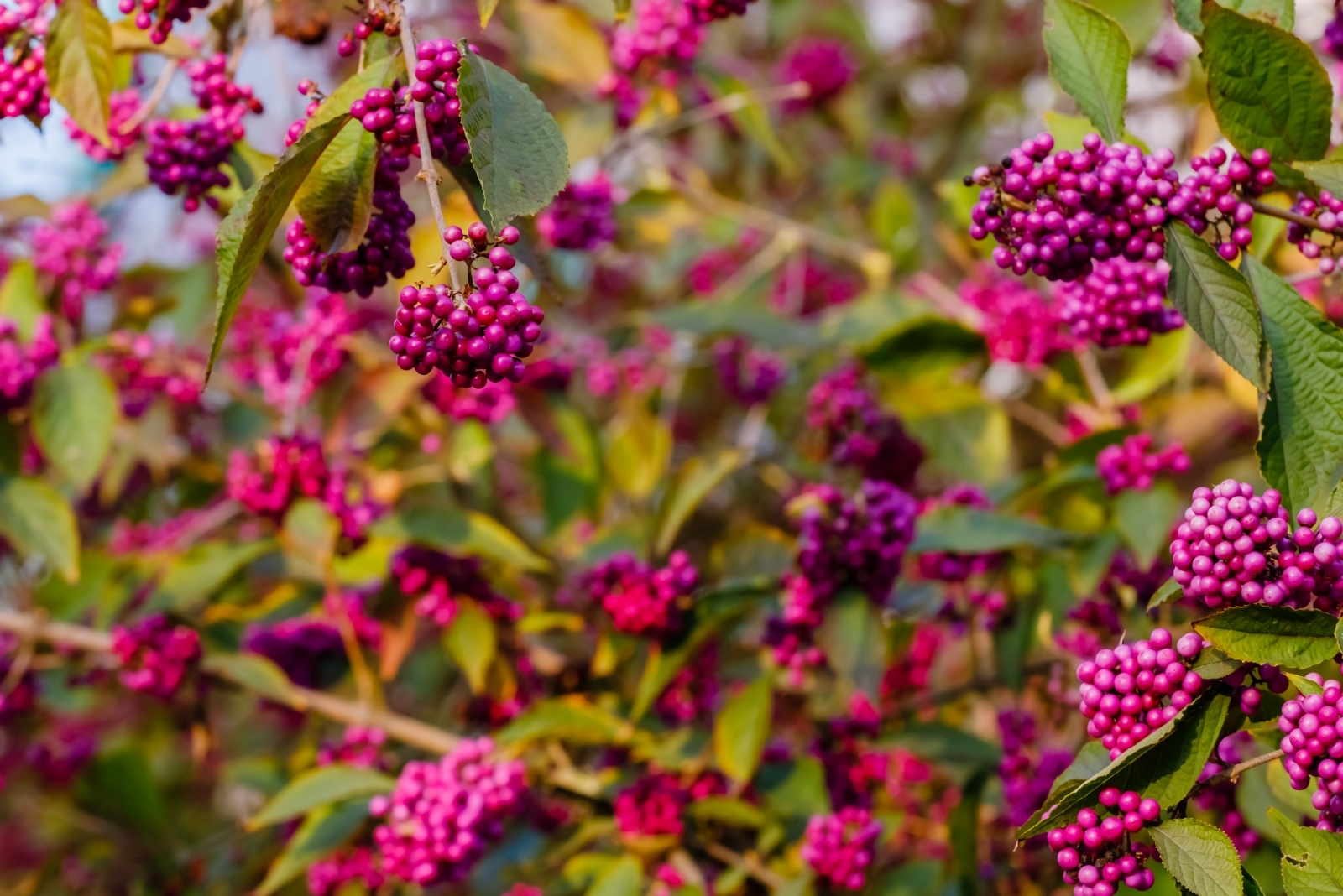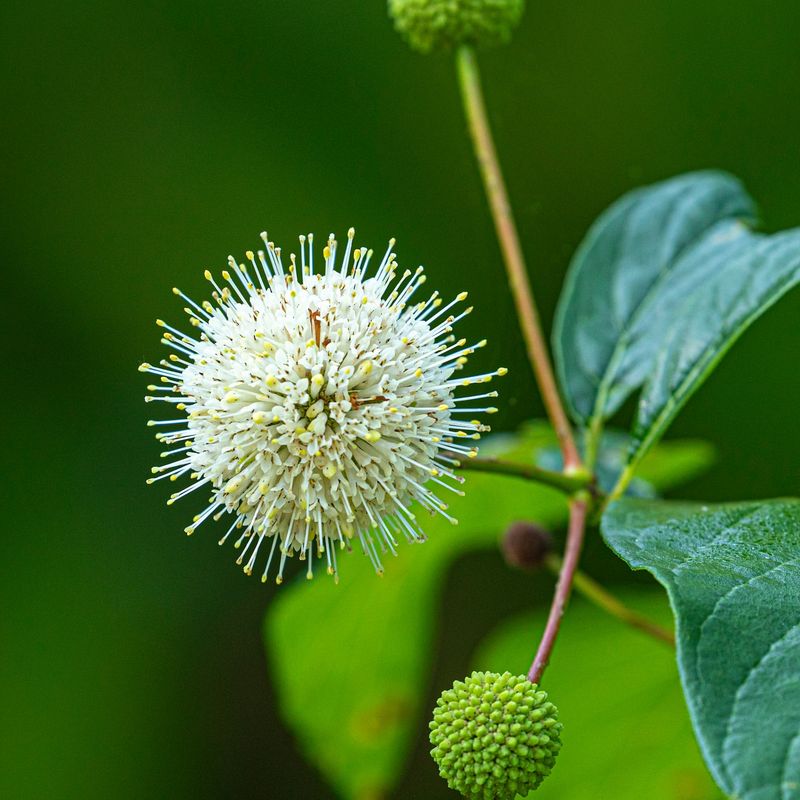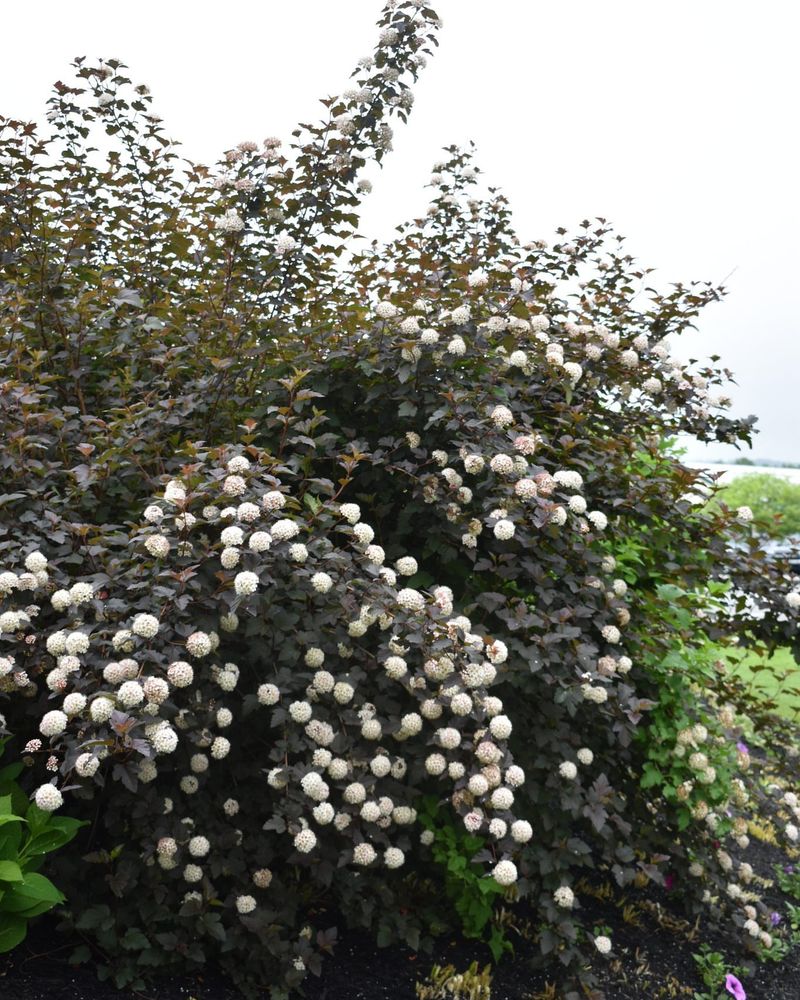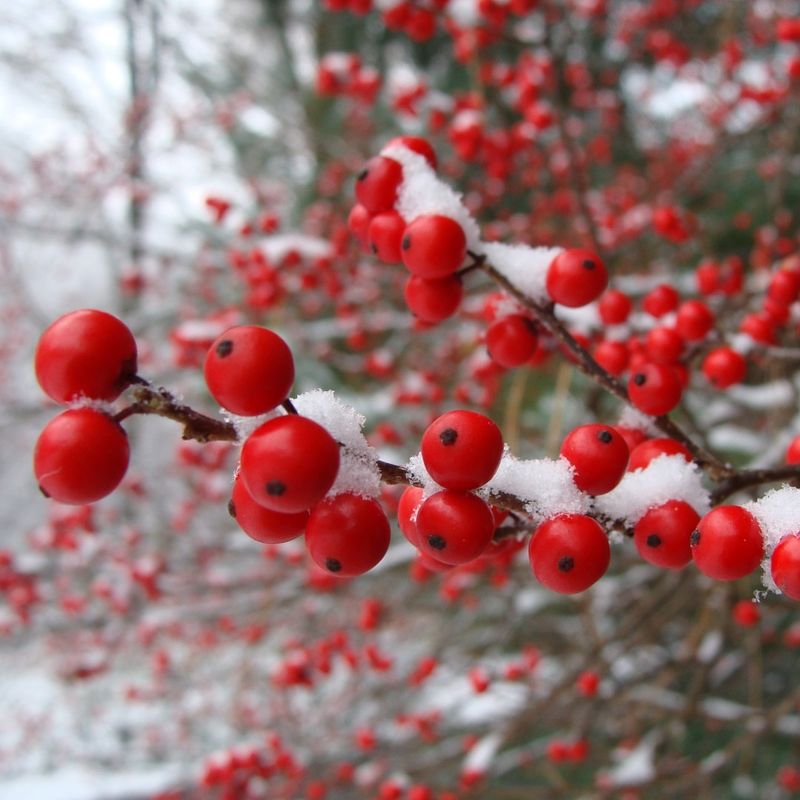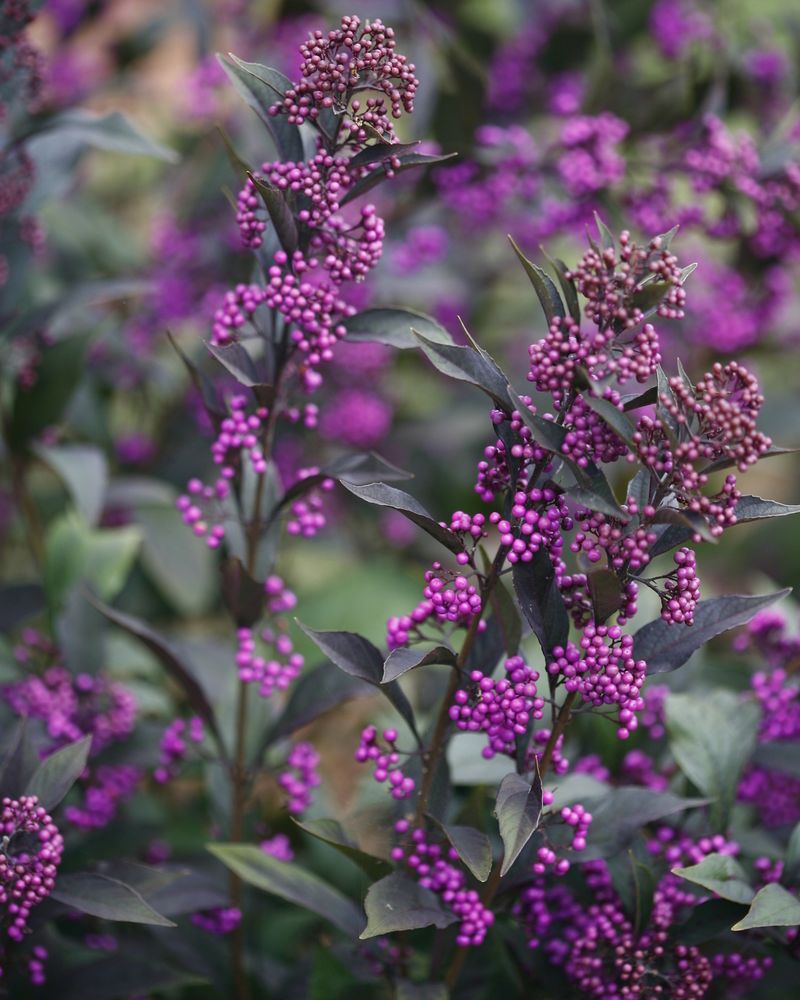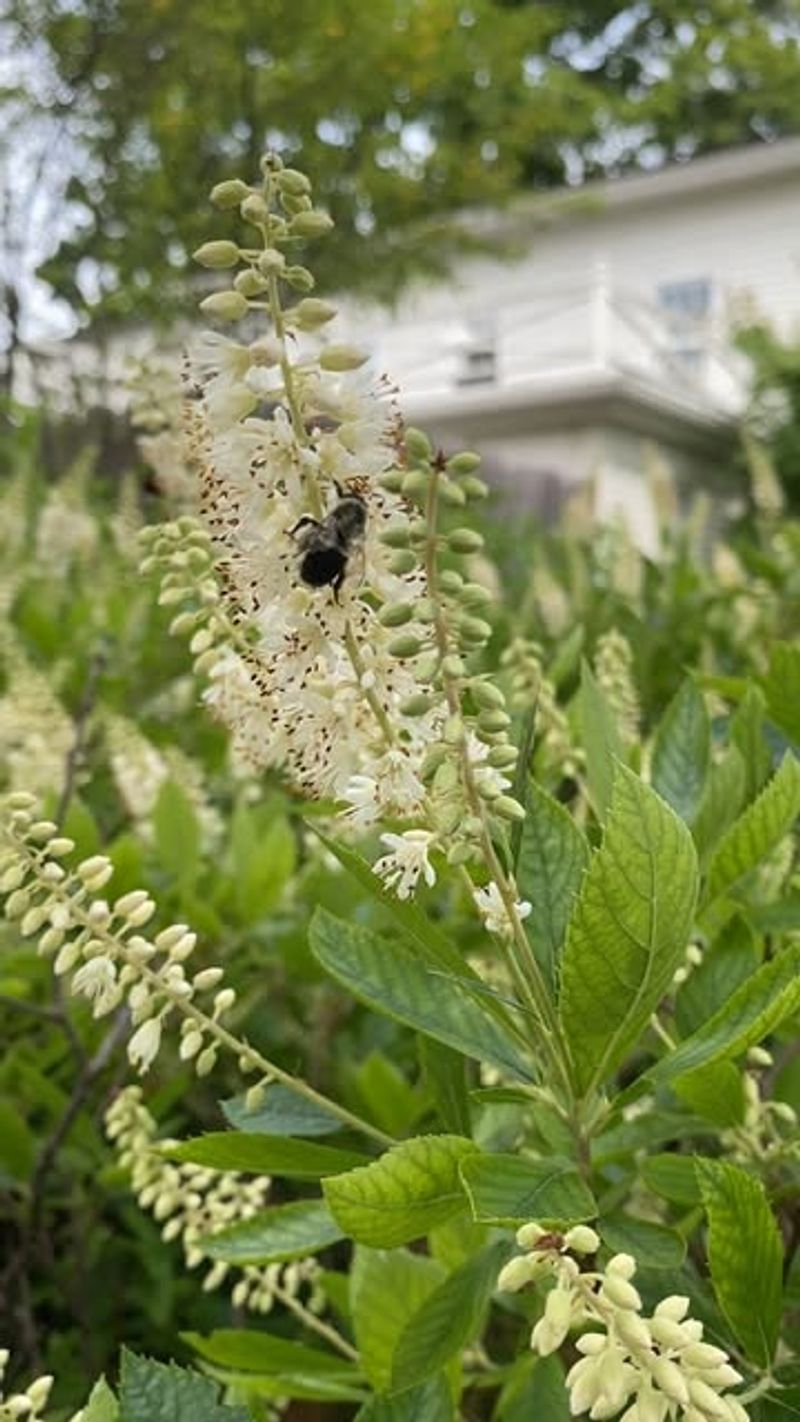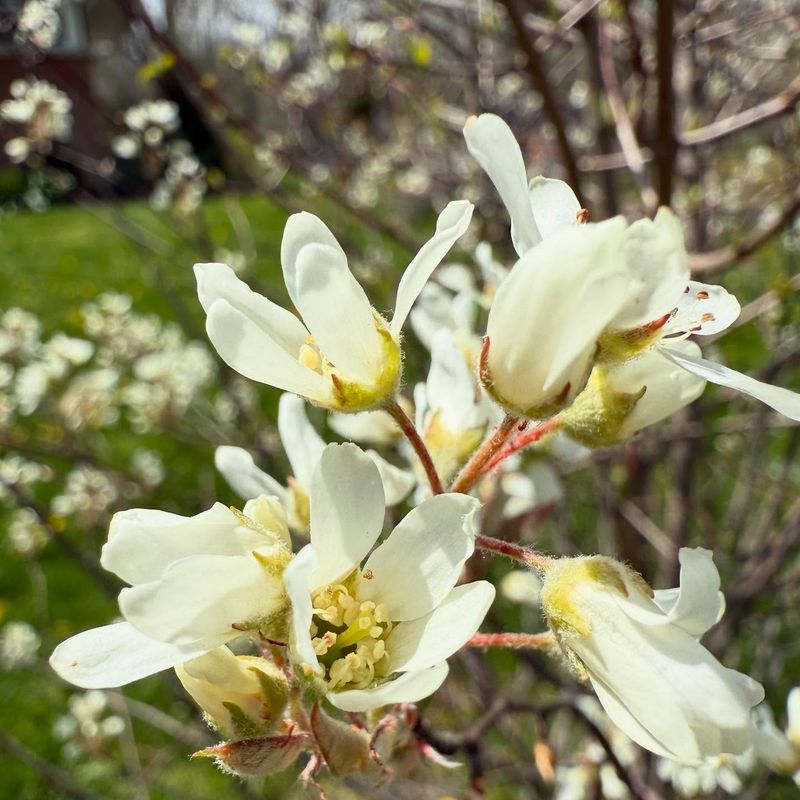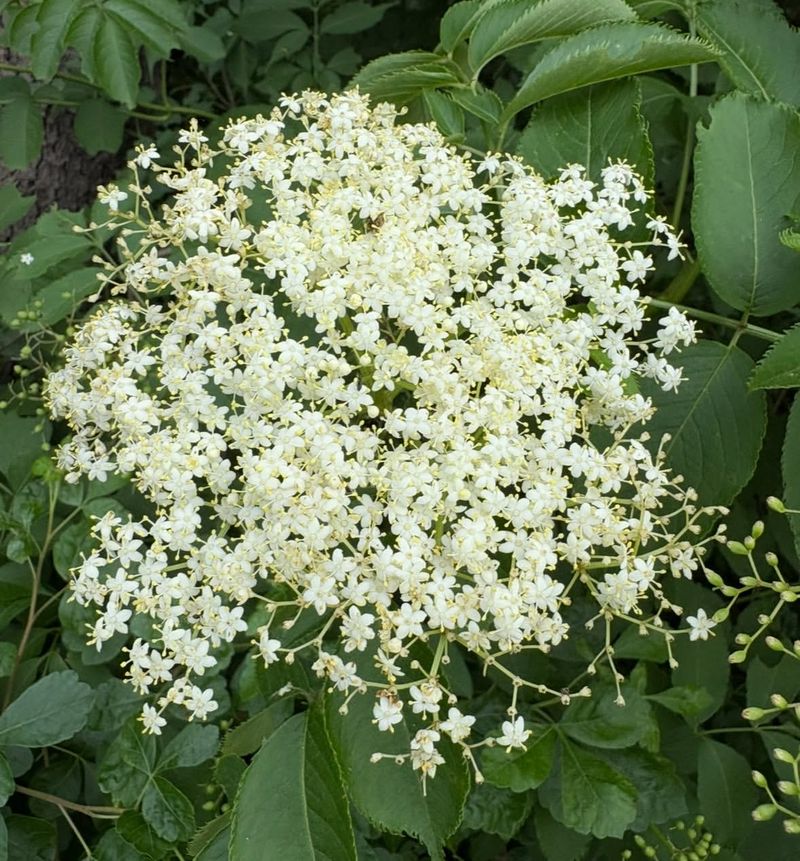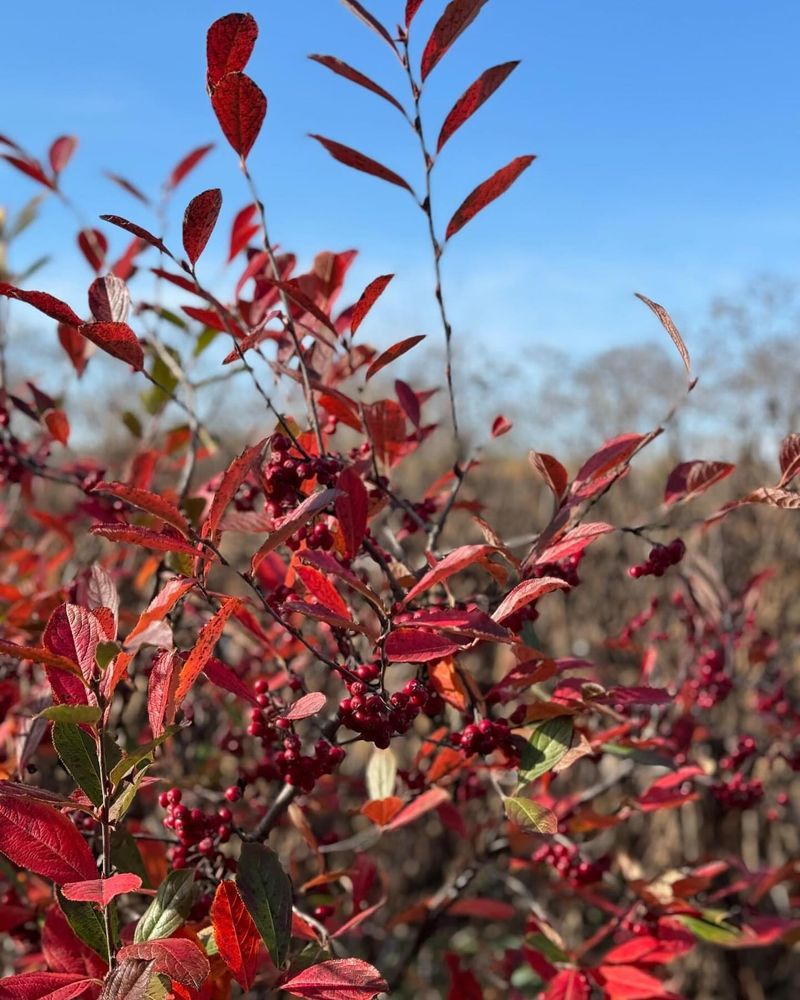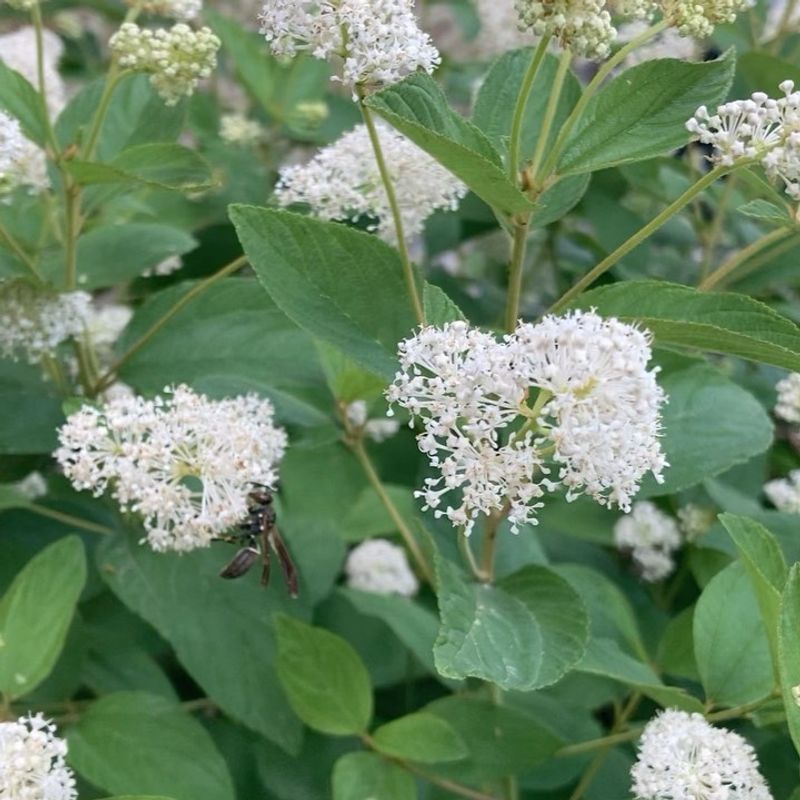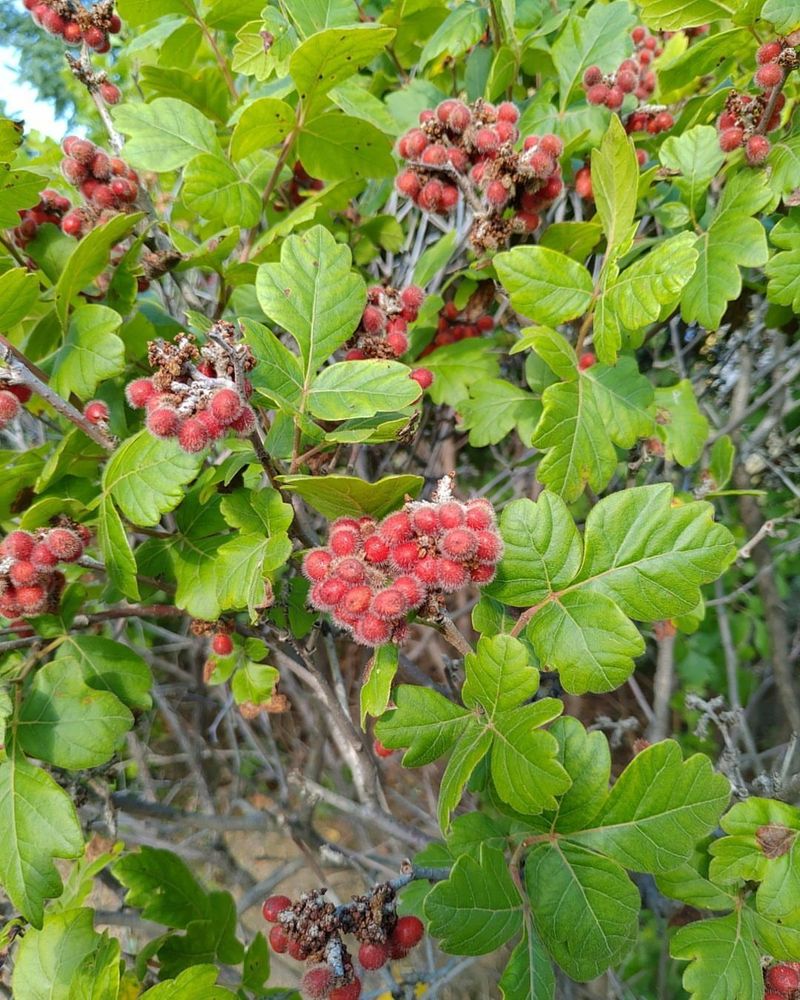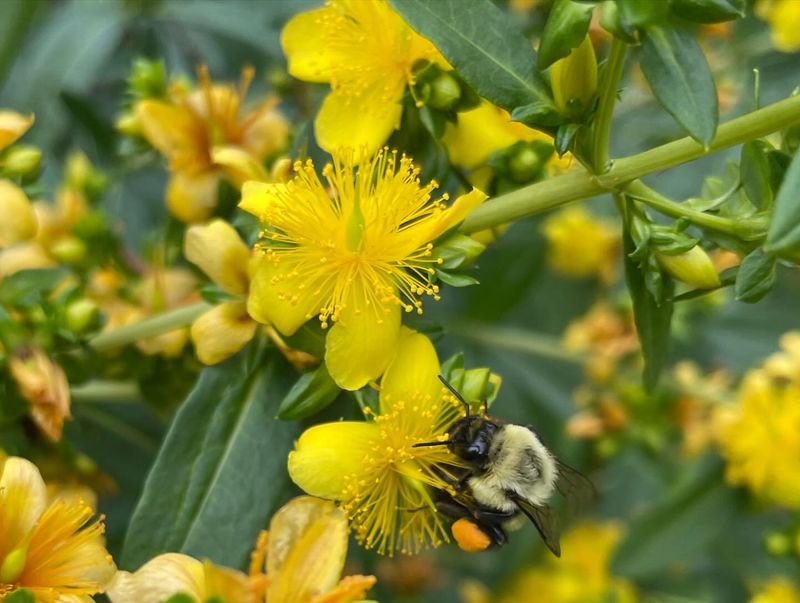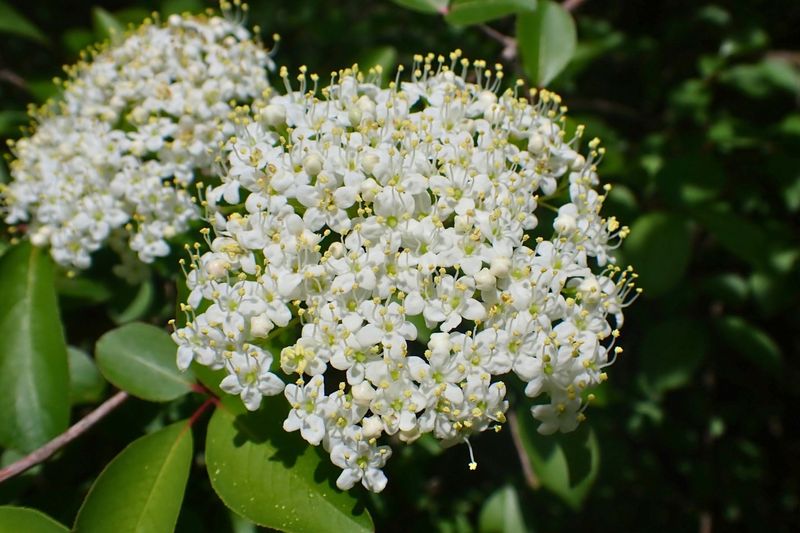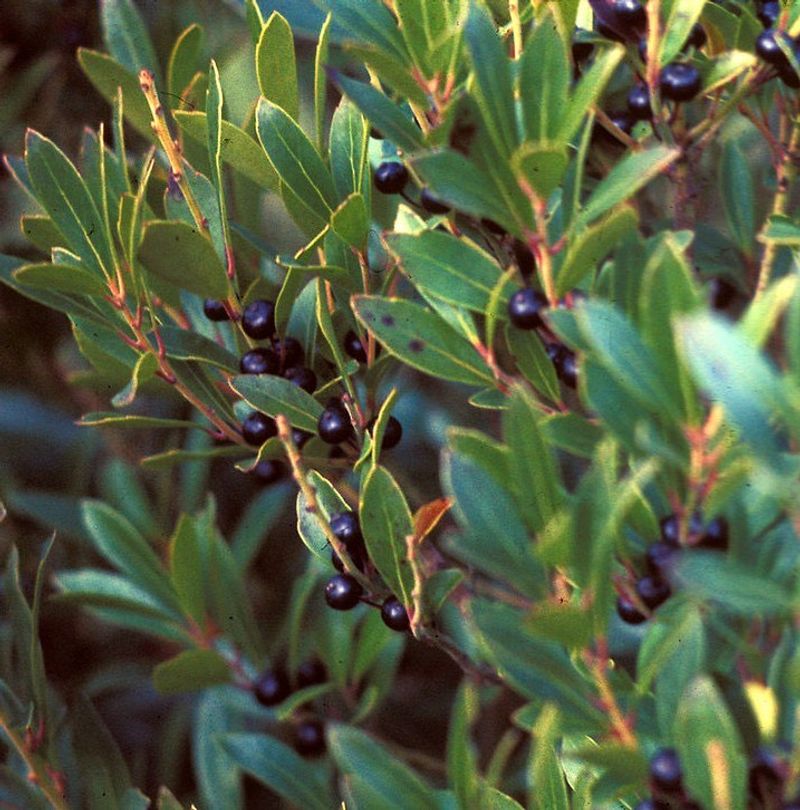Louisville yards come alive in the fall with pollinator shrubs that make great living fences. Spicebush, serviceberry, and beautyberry attract bees and butterflies while adding natural privacy.
These shrubs bring color and texture without much work. You’ll enjoy seeing pollinators visit as your fence grows greener. It’s an easy way to make your garden feel welcoming and full of life.
1. Buttonbush
Native to Kentucky wetlands, this unique shrub produces spherical white flowers that bees absolutely adore. The distinctive blooms resemble little pincushions or buttons.
Buttonbush can handle Louisville’s occasional flooding while providing valuable nectar sources late into summer. Plant several together for a water-tolerant living fence that benefits both your landscape and local pollinators.
2. Ninebark
Named for its peeling bark that reveals multiple layers, this tough Kentucky native sports clusters of white or pink flowers that pollinators flock to in spring. The exfoliating bark adds winter interest.
Ninebark handles Louisville’s clay soils with ease while providing food for native bees. Its arching branches create a naturally beautiful fence line that looks good in all four seasons.
3. Winterberry
Female plants produce stunning red berries that persist through winter, creating a feast for birds when food is scarce. This deciduous holly thrives in Kentucky’s climate and soil conditions.
Winterberry requires both male and female plants to produce berries, so Louisville gardeners should plant at least one male for every three to five females. The bright berries provide a pop of color in dreary winter months.
4. Beautyberry
Known for its spectacular purple berries that cluster along stems in fall, beautyberry creates a show-stopping fence line. The berries persist after leaves drop, providing visual interest through Kentucky winters.
This easy-care shrub tolerates Louisville’s occasional droughts once established. Birds love the berries, making beautyberry a dual-purpose addition that supports wildlife while creating a natural boundary.
5. Summersweet
Fragrant white flower spikes appear in mid-summer when many other shrubs have finished blooming. The sweet vanilla scent attracts countless butterflies and bees to Kentucky gardens during hot months.
Summersweet thrives in Louisville’s partial shade conditions where other flowering shrubs might struggle. Its tolerance for wet soils makes it perfect for those tricky low spots while creating a pollinator paradise.
6. Spicebush
This early-blooming native lights up the spring garden with yellow flowers before leaves emerge. Spicebush serves as a host plant for the spectacular spicebush swallowtail butterfly in Kentucky landscapes.
Female plants produce bright red berries in fall that birds adore. Louisville gardeners appreciate this shrub’s adaptability to both sun and shade, making it versatile for different fence locations around the property.
7. Witch Hazel
Fall-blooming varieties produce spidery yellow flowers when most plants are shutting down for winter. These unusual blooms provide late-season nectar for pollinators in Kentucky gardens when food sources are scarce.
Witch hazel’s spreading habit makes it excellent for wider fence applications in Louisville landscapes. The fragrant flowers and attractive fall foliage offer multiple seasons of interest along property boundaries.
8. Serviceberry
White spring flowers give way to edible berries that both humans and birds enjoy. This multi-stemmed native creates an excellent informal hedge while supporting over 35 species of birds in Kentucky landscapes.
Serviceberry’s brilliant fall color adds seasonal interest to Louisville garden boundaries. Its upright growth habit makes it perfect for properties needing taller living fences that provide privacy without looking too formal.
9. Arrowwood Viburnum
Flat-topped white flower clusters attract numerous pollinators in late spring. The blue-black berries that follow feed birds through fall in Kentucky gardens.
Arrowwood’s dense growth habit makes it ideal for Louisville privacy screens. Its ability to tolerate road salt makes this viburnum perfect for front-yard living fences where winter maintenance might impact other shrubs.
10. Elderberry
Large clusters of tiny white flowers support countless beneficial insects. The dark purple berries that follow can be harvested for jellies or left for birds in Kentucky gardens.
Elderberry grows quickly, making it perfect for Louisville gardeners wanting a fast-establishing living fence. Its compound leaves create a lush, tropical feel while the berries provide both wildlife value and homegrown treats.
11. Red Chokeberry
White spring flowers give way to brilliant red berries that persist into winter. The glossy foliage turns fiery red in fall, making Kentucky garden boundaries truly spectacular during autumn months.
Chokeberry tolerates Louisville’s occasional wet spells while maintaining good drought resistance. Its suckering habit creates a dense living fence that effectively blocks views while supporting local bird populations.
12. Virginia Sweetspire
Arching branches covered with fragrant white flower spikes create a fountain-like appearance. The blooms last for weeks, providing abundant nectar for Kentucky’s native pollinators.
Sweetspire’s fall color ranges from orange to deep purple in Louisville gardens. Its ability to thrive in wet or dry conditions makes this native shrub incredibly versatile for problem areas along property lines.
13. New Jersey Tea
This compact native shrub produces fluffy white flower clusters that attract a remarkable diversity of pollinator species. Despite its name, this plant thrives throughout Kentucky and provides exceptional ecological value.
New Jersey Tea’s smaller stature makes it perfect for Louisville front yards or areas where a lower living fence is desired. Its deep root system helps it survive drought conditions while supporting soil health.
14. Fragrant Sumac
This non-irritating relative of poison ivy produces early spring flowers that provide crucial nectar for Kentucky’s first emerging bees. The red berries that follow feed birds through winter months.
Fragrant sumac’s spreading habit makes a perfect informal boundary for Louisville properties. Its ability to grow in poor soils makes it ideal for challenging spots where other shrubs might struggle.
15. Shrubby St. John’s Wort
Bright yellow flowers with prominent stamens appear throughout summer, creating a striking display. Unlike herbaceous varieties, this woody Kentucky native forms an excellent year-round structure for living fences.
Shrubby St. John’s Wort thrives in Louisville’s hot summers and attracts numerous beneficial insects. Its blue-green foliage provides an attractive backdrop that complements other garden plants throughout the growing season.
16. Possumhaw
This deciduous holly drops its leaves to reveal stunning displays of red berries along bare branches. The winter show provides both beauty and bird food in Kentucky’s coldest months.
Possumhaw tolerates Louisville’s clay soils better than many other shrubs. Like winterberry, you’ll need both male and female plants, but the spectacular winter display is well worth the garden space.
17. Blackhaw Viburnum
White flower clusters in spring give way to blue-black fruits that birds and wildlife adore. This Kentucky native can grow quite large, creating an impressive natural screen for Louisville properties.
Blackhaw’s fall color ranges from pink to deep burgundy, adding seasonal interest to living fences. Its edible berries were used traditionally by Native Americans and early settlers throughout the region.
18. Inkberry Holly
This evergreen holly provides year-round structure without the prickly leaves of other varieties. The small white flowers support pollinators while black berries feed birds throughout Kentucky winters.
Inkberry’s dense growth habit makes it perfect for Louisville privacy screens. Its tolerance for wet conditions makes it ideal for low-lying areas where drainage might be a concern along property boundaries.

